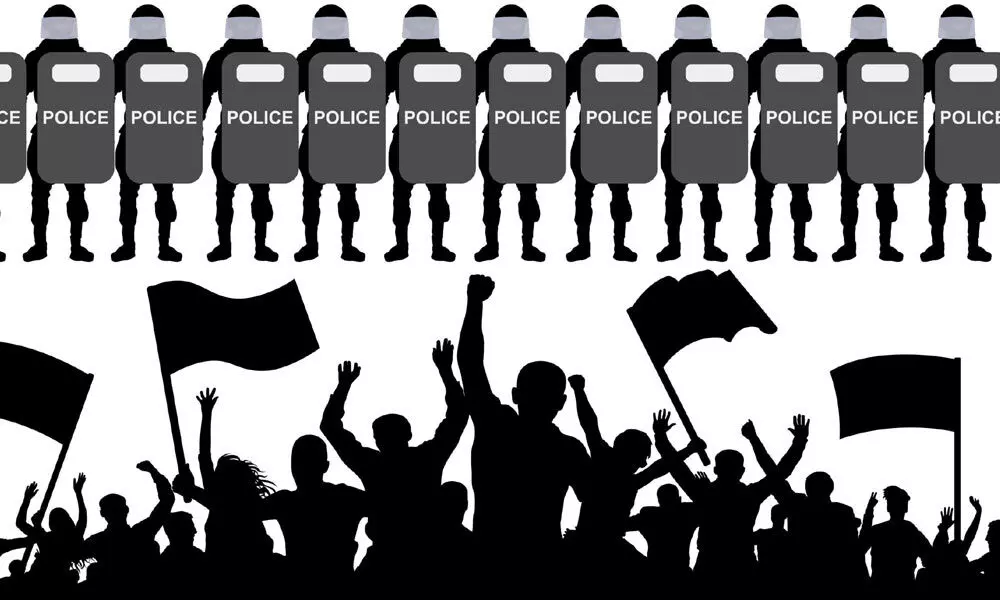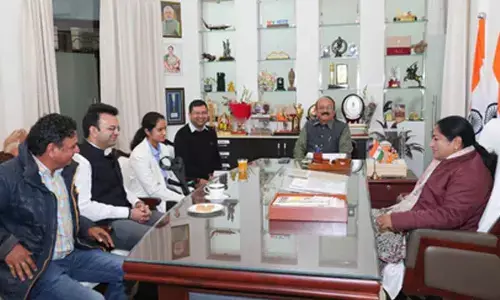India's new threat: 4th Gen Warfare

India’s new threat: 4th Gen Warfare
Whenever there is mention of a threat to national security, people think of our defence forces in their glorious battle dress – protecting the country on our borders against external attacks and winning the war for us
Whenever there is mention of a threat to national security, people think of our defence forces in their glorious battle dress – protecting the country on our borders against external attacks and winning the war for us. In the days of Cold War, the two superpowers tried to outdo each other militarily and their race for superiority in the use of missiles produced the ultimate deterrence - the system termed as Mutually Assured Destruction (MAD) built by the US.
Even as the open warfare was kept in check, there were attempts to cause ideological subversion and foment armed insurgency to weaken the adversary. It is, however, the rise of the phenomenon of 'covert' offensives witnessed in the post-Cold War period – after the success of the anti-Soviet armed campaign in Afghanistan had resulted in the dismemberment of USSR ending the Cold War – that brought in the era of 'asymmetric' warfare.
Use of terrorism for covert offensives across geographical boundaries helped replace open attacks with 'proxy wars' – with India becoming the biggest victim of cross-border terror instigated by Pakistan in Kashmir and elsewhere. 26/11 became India's 9/11 as Pakistan's ISI used terrorists to carry out an unprecedented covertly planned attack on Mumbai from the sea front.
This war by stealth has set apart the distinct dimensions of 'defence' and 'security,' calling for new measures to cope with the advancement of weaponry in one case, and the technology used by terrorists in the other. The Sino-Pak axis has aggravated the threat of Pak-sponsored proxy war against India as cross-border terrorism was now sustained by the use of drones – a product of Chinese technology – for surreptitious dropping of arms and ammunition in the Kashmir Valley and drugs in the bordering areas of Punjab. Emergence of social media as an instrument of combat and use of internet for spreading 'radicalisation' and facilitating recruitment of potential terrorists have made the work of the adversary easier and the task of countering it so much more difficult.
An entirely new extension of 'proxy war' aimed at 'winning the war by other means' is the use of civil rights fora to run down a democratically elected government by building narratives for influencing the unsuspecting people against the ruling dispensation. Majoritarianism, authoritarianism and treatment of minorities are 'issues' that could be easily built on vague grounds for creating the impression that Constitutional mandate is not being followed by the ruling regime.
Influencing the political outcome through non-governmental bodies linked to lobbies at home and abroad is a new age phenomenon – it uses 'human' channels that supplemented what was being attempted through 'technology' on the internet.
The significance of the recent address of National Security Advisor Ajit Doval at the 'passing out' function for new IPS officers at the National Police Academy in Hyderabad can be grasped in this context. He pointed out that civil society was the new frontier of war as it can be manipulated to hurt a nation's interests. He aptly described it as 'fourth generation' warfare – it certainly represented the finer realms of 'proxy war.' Those who are to safeguard internal security – and police is often the first responder there – need to be made fully aware of this challenge that goes beyond the conventional law and order. The success of the adversary in creating an underground network of agents and operators that needs to be thwarted. In vulnerable border states such as J&K, Punjab, Arunachal, Mizoram, Nagaland and Manipur, a greater proportion of state police personnel should be seconded to intelligence function. Even policemen in uniform should be sensitised to take note of activities of fora that are playing 'politics by proxy' in collaboration with external lobbies. This should be done without prejudice to legitimate media activity and philanthropic missions, and action should be initiated only where there is a clear violation of the country's laws.
In essence, the three contemporary features of India's internal security scenario are the adversary's attempts to use radicalisation for trapping vulnerable elements into becoming a part of the underground terror network, accentuate the majority-minority divide to feed communal militancy, and float civil society platforms to run down India on issues of governance.
Intellectualised debates have been sponsored on matters ranging from putting a question mark on Indian identity to advocating a place for China in Indo-Pak talks on Kashmir, because of the Chinese claim on the territory of that state. The challenge on internal security front is to draw in the police as a responder without permitting any scope for politicisation of the same.
(The writer is a former Director of Intelligence Bureau)

















